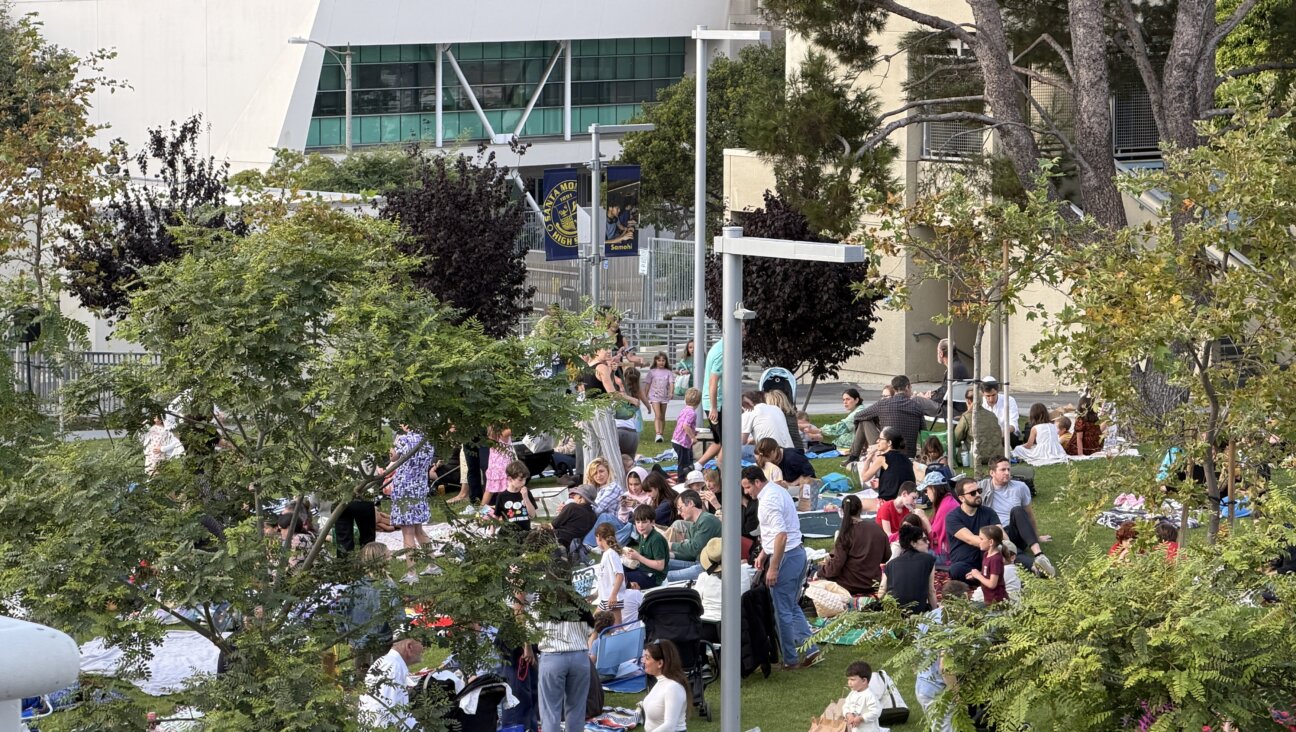Co-op Murals Face Plastering
Faded and unkempt, the Hugo Gellert murals in the Seward Park Houses on the Lower East Side of Manhattan are once again at the heart of a budding controversy. This week the co-op’s shareholders are voting — ballots were due Friday — on whether they will be plastered over as part of a modernization of the buildings’ lobbies. Preservation-minded residents are up in arms.
Seward Park was built as housing for the working-class members of the International Ladies’ Garment Workers’ Union, and the Gellert murals — commissioned by the United Housing Foundation in 1959 — were intended as their crowning touch. For the Seward Park murals, the Hungarian-born Gellert created a paean to the American way of life, centered around four primary figures: Thomas Jefferson, Abraham Lincoln, Franklin Delano Roosevelt and Albert Einstein.
At the time, the textile industry was New York’s largest, and the ILGWU was the city’s biggest union. A well-regarded artist of the time, Gellert had drawn the cover for the first issue of New Masses, the famous left-wing journal of the 1930s. He had also designed a mural for the recently built Rockefeller Center, along with Diego Rivera’s controversial “Man at the Crossroads.”
A petition asking residents to vote to keep the murals has been passed out throughout the buildings. This is not the first time the co-op board has battled over the artworks. In 1989, and again in 1998, a vote came up, causing an outcry among neighborhood activists and artists. In 1989, an ad-hoc group, the Committee for Mural Preservation, fought off attempts by residents to remove them, passing out leaflets that claimed that the Gellert murals could be restored for less than it would cost to scrape and repaint the walls. Artist Chaim Gross, one of Gellert’s contemporaries, said that the destruction of the murals “would create an irreparable loss to all concerned.”
In 1998, another battle was fought over the future of the murals, when the Seward Park board of directors announced its plans to cover up the murals. Once again, the pro-preservation troops were mobilized, events like “The Art and Activism of Hugo Gellert” symposium at New York University were held and the murals were saved.
Contrary to expectations, many of the long-term residents of the building are in the forefront of the anti-mural movement, while younger residents with less tenure at Seward Park are in the preservation camp. “Maybe they’re just bored of looking at them, and at the lobbies that have never been updated,” said Jac Zagoory, who signed the pro-preservation petition. Jocelyn Simonson, who moved to Seward Park two years ago, said, “Part of the reason I fell in love with this apartment is the FDR mural in the lobby. They’re a nice symbol of the spirit in which these buildings were built, as working-class housing.”
Detractors see the murals as ugly and inappropriate for the building’s current residents and would like to see a less political, more eye-pleasing design for the lobbies. The renovation is part of a recent move to spruce up the buildings, taking them out of their socialist roots toward a future of higher rents and tonier lifestyles.
“I don’t think the old people really hate them, and I don’t think anyone’s against the message,” Zagoory added. “But it’s about the changing of Seward Park — making it look like the rest of Manhattan and not like an older building that’s been hanging on.”
Gellert’s murals are each divided into three parts, with the central figure flanked on each side by complementary material. The murals are a celebration of American history and an anguished cry at injustice, past and present. Jefferson is flanked by legendary pamphleteer Thomas Paine and Boston Massacre martyr Crispus Attucks. Lincoln is surrounded by a panoply of anti-slavery crusaders, including Frederick Douglass and John Brown. The murals contain the hope of a brighter future: an olive branch jammed into a military helmet, a giant-sized man and woman planting a delicate tree, three children of indeterminate race playing together. Gellert also did not shy from painting the ugliness of American history — the shackled hands of a slave, a worker split in two by the flaming-yellow torch of the atomic bomb. Gellert may be a mere footnote in the annals of art history today, but the Seward Park murals are among the finest work of his underappreciated career, and are a superb example of the socialist-leaning, politically conscious art that had its brightest moments in the 1930s.
The textile industry is long gone from this part of the Lower East Side. The ILGWU’s successor, Unite! — created in 1995 when the ILGWU merged with the Amalgamated Clothing and Textile Workers Union — is not a major force in local politics, nor is there a large socialist presence in the old neighborhood. The days when artists and their works were the subject of great public interest and debate are long gone, for the most part. The Lower East Side’s long history of political agitation, intellectual vibrancy and working-class life have their symbol in Gellert’s yearning murals, hoping for the day when Roosevelt’s four freedoms and Jefferson’s self-evident truths become unquestioned reality.
Covering the murals would also obfuscate the histories of the working-class individuals who lived and died in this neighborhood, striving to better themselves — and the world.















